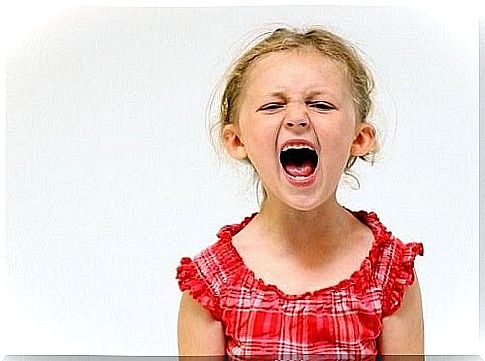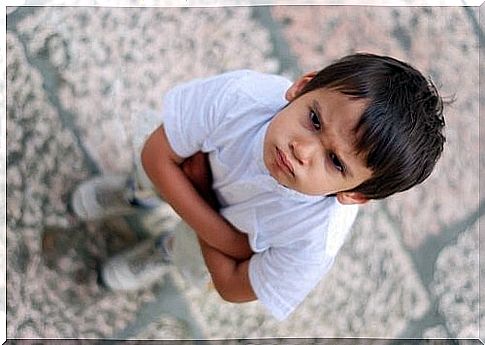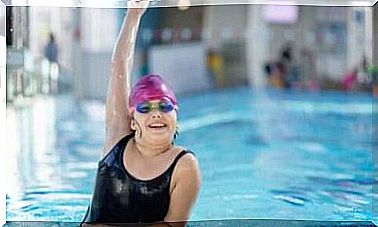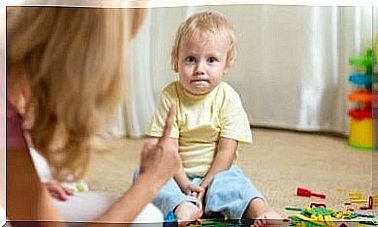Low Frustration Tolerance: How To Help Your Children

In this article, we explain different ways you can help children with a l of frustration tolerance. Children need to learn how to deal with frustration at an early age so that they can effectively face different situations in their daily lives.
It is important to understand that frustration is an emotional response that occurs when our projects go wrong or our hopes or dreams do not come true.
This generates emotions such as sadness, anger, anxiety and worry. All children may react differently to this type of situation. Therefore, it is important to know how to identify children with a low frustration tolerance.
Characteristics of children with a low frustration tolerance
When we try to protect our children from frustration, or when we give them everything they want, we do nothing to help them.
One way to promote healthy development in young children is by helping them accept that life consists of both failure and success.

- Children with a low frustration tolerance are more impatient and impulsive.
- They have a harder time controlling their emotions.
- Children with a low frustration tolerance are extremely demanding.
- They try to satisfy their needs as quickly as possible. They may start to cry or have a tantrum if they have to wait too long for something.
- They are more likely to develop symptoms of depression or anxiety in the face of major difficulties or conflicts.
- These children have a harder time adapting and being flexible.
- They think they deserve everything they want and that the whole world revolves around them. They may think that rules and boundaries are unfair. It’s hard for them to understand why they can not get everything they want.
- These children tend to think black and white. They do not believe in compromises.
Reasons for a low frustration tolerance
Some of the most common reasons why children have a low frustration tolerance are:
1. Instant satisfaction of all their needs. The child gets everything she wants when she wants it. Therefore, she never learns to delay gratification. The child prefers to get a small reward instead of waiting for a bigger one.
2. Lack of boundaries in their upbringing. It is common to see that children with this behavior have been brought up without boundaries and they will not accept a “no”.
3. Parents making decisions on their behalf. Since choosing between different options involves some risk, many parents end up making decisions on behalf of their children so that they are not exposed to disappointment.
How to help children with a low frustration tolerance
It is very simple to help children who have a low frustration tolerance. Here are some tips:
- Pay attention to the specific reasons behind their reactions.
- Explain to them that it is normal to make mistakes. When you help your child express his feelings, you teach him to face frustrating situations.
- Try to teach your child the difference between wants and needs. This will help them control their impulses.
- As an adult, you need to be able to establish goals and boundaries where you remember the child’s age and abilities. This way you avoid unnecessary frustration.
- A little humor can be a great help when faced with difficult situations.
Activities for children with a low frustration tolerance
Therapies and exercises for children with a low frustration tolerance can be a great support tool so you can stimulate a balanced development in young children.
By doing this now, you can help ensure that your son or daughter will be able to control his frustration as an adult.
Therapies for children with a low frustration tolerance
- Relaxation techniques. You can teach your child relaxation techniques that will help them see the world with a more positive attitude when faced with adverse situations. Teach them to increase their frustration tolerance by relaxing in their body and mind.

- Teach them to recognize frustration. It is important for children with a low frustration tolerance to be able to identify the moment when the feeling of frustration takes over.
- Tell your child that he can ask for help. Teach him to look for solutions. If he feels frustrated when trying to do certain tasks, then make sure he tries in other ways before getting angry or giving up.
Other activities for children with a low frustration tolerance
- Reinforce good behavior. It is important to praise your child when he responds to a frustrating situation in an appropriate way.
- Change the task. Show them a different way in which they can achieve what they want.
- Role play. You can turn a frustrating event into a game. Let them unfold their frustration first. Then get them to play the opposite role. Encourage your child to talk to himself or herself in a positive way so that he or she can find the best way to solve the problem.
Love and understanding are the best strategies in many cases when dealing with low frustration tolerance.
Since there are situations in life where frustration is inevitable, it is most important that you give your child tools so that he can acknowledge this.
This way, it will be easier for him to ask for help when he needs it.









